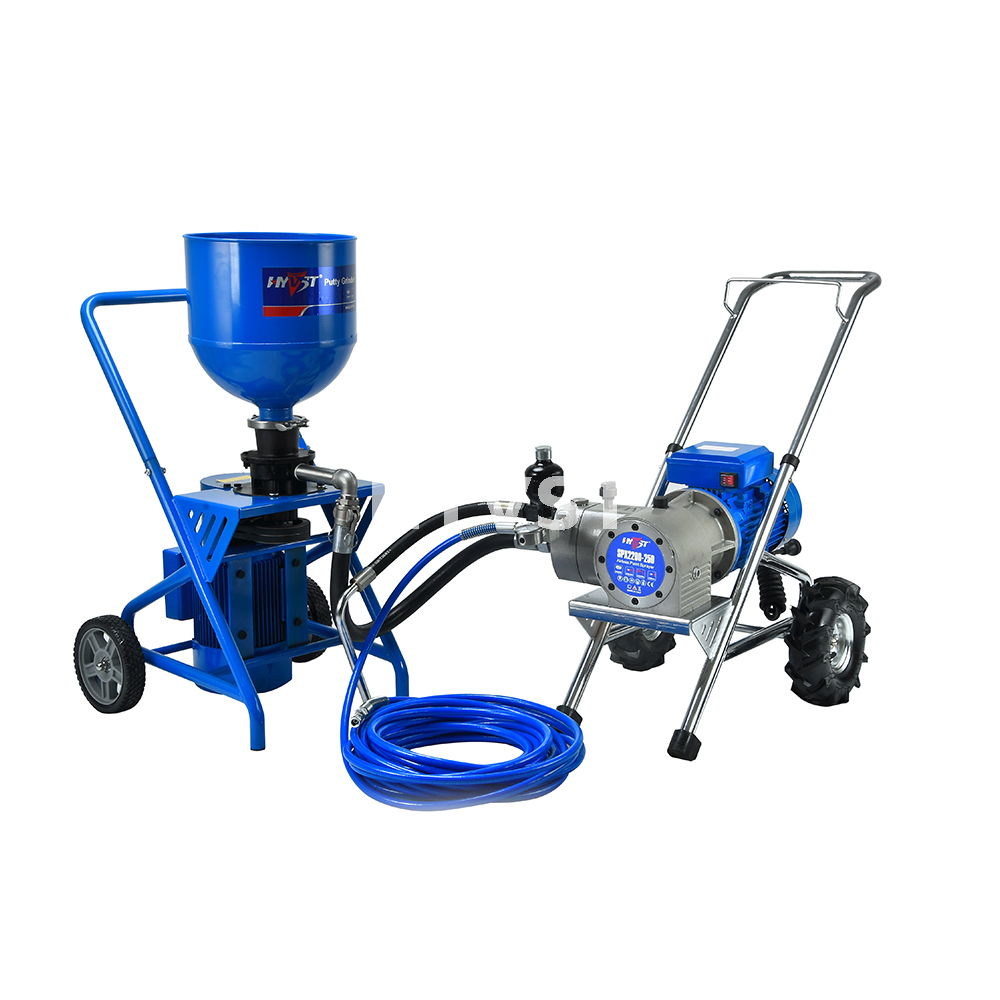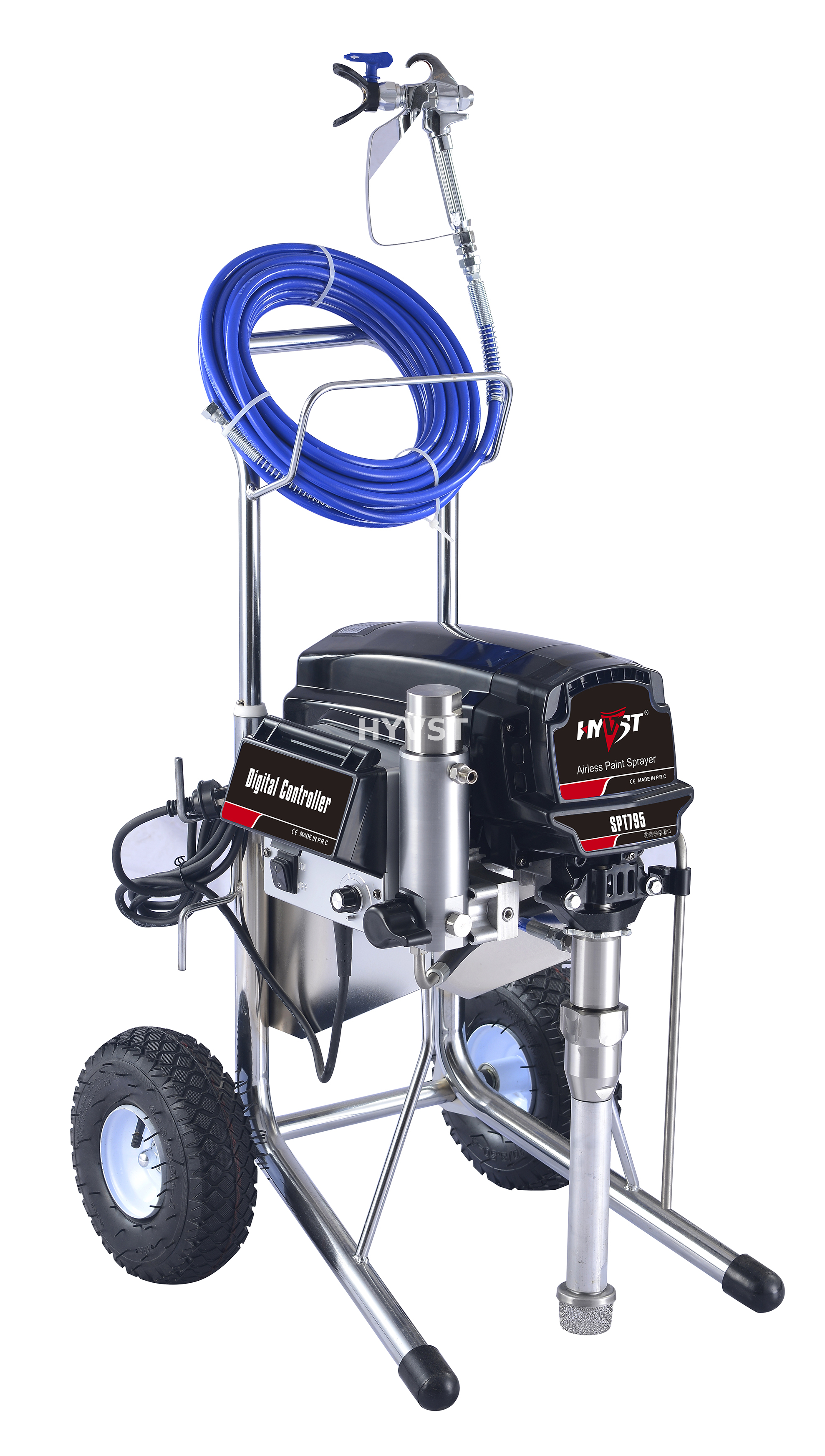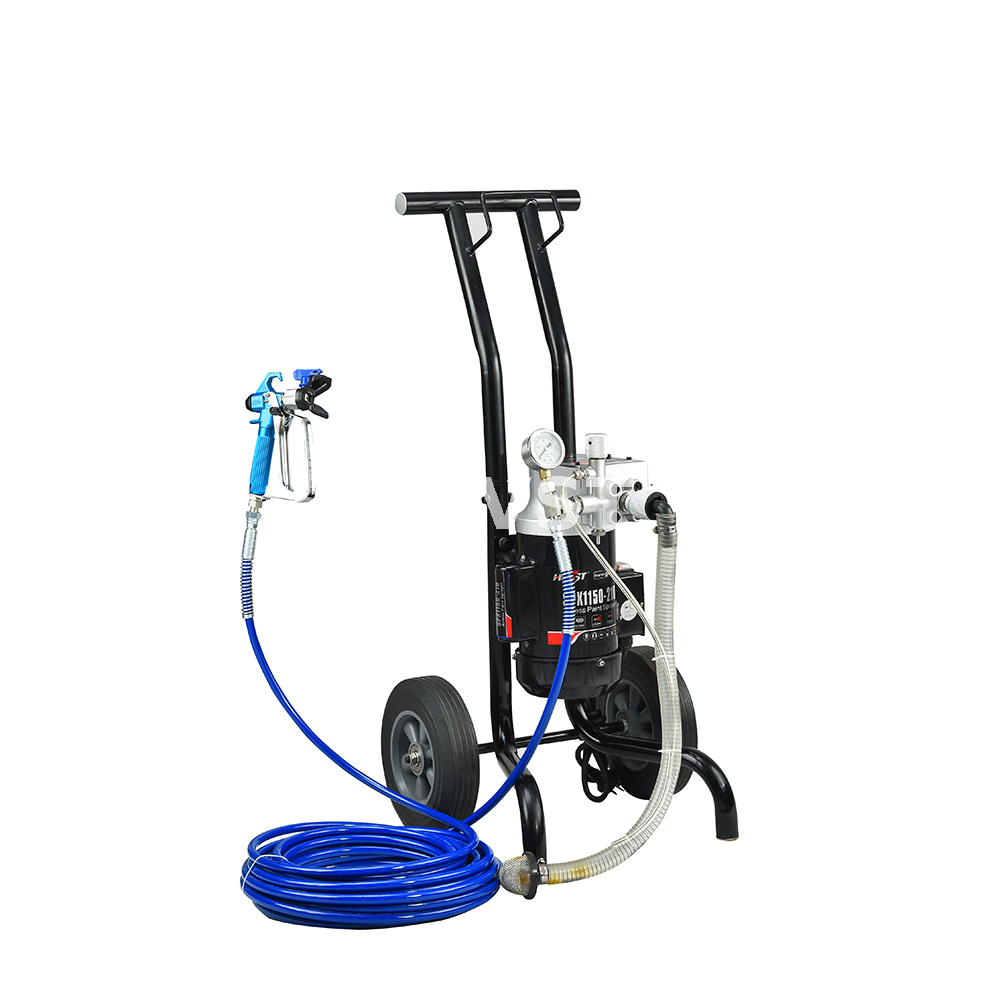Views: 3 Author: Site Editor Publish Time: 2025-07-07 Origin: Site









Overspray can be a major headache when spray painting outdoors. It leads to wasted paint and messy surroundings. In this article, we’ll discuss why controlling overspray is crucial for efficient painting.
You'll learn how airless paint sprayers help prevent overspray, saving time, money, and keeping your workspace clean.

Overspray occurs when paint drifts beyond the intended surface. Several factors contribute to this issue:
● Airflow and Wind Conditions: Wind can easily carry the spray mist, causing the paint to land on unwanted surfaces. Outdoor conditions often make it challenging to control the direction of the spray.
● Incorrect Pressure Settings: If the pressure is set too high, the sprayer will release too much paint, leading to overspray. On the other hand, too low pressure can result in uneven coverage, forcing you to spray multiple layers and increasing the risk of overspray.
● Too Close or Too Far Spraying Distance: Spray distance plays a big role. Being too close to the surface causes paint buildup and splattering. Spraying too far spreads the paint too thinly, creating a wider spray pattern that might drift.
● Choice of Spray Tip and Nozzle: The right tip size is crucial. A larger tip releases more paint, which increases the chance of overspray. Choosing the right tip size based on the paint type and surface is key to achieving a controlled spray pattern.
Overspray affects not just the final look of your project but also the surrounding environment.
● Paint Wastage: Overspray leads to unnecessary paint loss, wasting both time and resources. It's frustrating to see paint miss the target area and end up on the ground or surrounding surfaces.
● Damage to Surrounding Surfaces: If you're painting near furniture, plants, or cars, overspray can cause unwanted damage. It can stain surfaces that you didn’t intend to paint, leading to extra cleanup or even repairs.
● Environmental Concerns and Safety: Paint that drifts into the air can contribute to pollution, especially if you're using materials that contain harmful chemicals. Plus, overexposure to paint fumes can pose health risks.
● Time and Labor Inefficiencies: Excessive overspray means more time spent cleaning and fixing mistakes. You'll need to spend extra time wiping down surfaces and applying additional coats to areas that were missed or improperly painted.
When selecting an airless paint sprayer, the key is to focus on features that minimize overspray. Here are some models and their standout features:
● Pressure Control: A reliable mechanical valve helps maintain consistent pressure, which is crucial for preventing overspray. A steady flow ensures even application and reduces the chance of paint misting.
● Spray Tip Compatibility: Choosing the right spray tip is essential. For example, a 0.017″ tip ensures that the right amount of paint is applied without excess splatter. The smaller the tip, the more controlled the spray pattern.
● Quality of Components: The sprayer’s stainless steel and tungsten carbide inlet/outlet valves are designed for durability, preventing leaks and blockages. This results in more consistent paint flow and less overspray.
● Variable Pressure Adjustment: This feature allows you to adjust pressure based on the paint's viscosity. Whether you're using thick or thin paint, proper pressure helps atomize the paint better, resulting in fewer splatters and more control.
● Smart Controller: A smart controller regulates power settings to ensure the sprayer operates smoothly. It adjusts in real-time to prevent fluctuations, which can lead to inconsistent paint application and overspray.
● Brushless Motor Design: The brushless motor is more efficient and reliable. It provides precise spray control and consistent performance, minimizing the risk of over-applied paint and reducing overspray during long tasks.
● Wheeled Cart Design: The wheeled cart design ensures you can easily move the sprayer around, keeping it at the optimal distance from the painting surface. This is crucial for reducing overspray, as proper positioning prevents the paint from drifting off-target.
● Grinding Machine Feature: This model also includes a grinding machine that helps prepare the surface for a smoother application. A better surface finish means more even paint coverage and less paint wastage from overspray.

The size of your spray tip plays a big role in controlling overspray. A 0.017″ or 0.019″ spray tip is ideal for smaller, more controlled spray patterns. It limits the amount of paint being sprayed, preventing excess mist and ensuring the paint is applied precisely. These tip sizes help focus the paint, reducing drift and making the application more even.
Different materials require different spray tips. For oil-based paints, you might need a larger tip to ensure proper atomization. On the other hand, water-based paints work well with a smaller tip, like the 0.017″ or 0.019″. Primers often require specific tips depending on their viscosity. Using the wrong tip can cause the paint to apply too heavily, leading to overspray and wasted material.
The optimal spraying distance is typically between 350-400mm for most airless paint sprayers, including models like the SPX1150-210, SPT795, and SPX2200-250. Keeping this distance is crucial for controlling overspray. Spraying too close can cause excessive paint buildup, while spraying too far may result in a wider, less controlled spray pattern.
Adjusting your distance can greatly influence the result. Getting too close to the surface can lead to oversaturation, causing paint to drip or splatter. Spraying too far can create a misty, uneven coverage, increasing the risk of overspray. It's essential to maintain that 350-400mm range for a uniform, controlled spray pattern.
Pressure control is key to preventing overspray. Models like the SPX1150-210 and SPT795 feature mechanical pressure control valves. These valves maintain consistent spray pressure, ensuring an even application. A steady spray minimizes the chances of excessive paint being released, which can lead to overspray.
When comparing mechanical versus electronic pressure control, both serve the same purpose: to stabilize pressure. However, mechanical valves offer reliability and simplicity, while electronic valves may provide finer adjustments. Both systems, when properly set, help control overspray.
Using extension wands is a simple yet effective way to control overspray. For example, a 60 cm extension wand on the SPX1150-210 or a 50 cm extension wand on the SPT795 helps maintain the optimal distance from the surface. This distance is crucial for reducing overspray.
Extension wands make it easier to spray hard-to-reach areas, such as high walls or tight corners, without moving the sprayer too close to the surface. This helps achieve even coverage and minimizes overspray in areas that are difficult to access with shorter nozzles.
The right pressure setting is crucial for controlling overspray. For example, the SPX1150-210 operates best at 21Mpa, ensuring a consistent, controlled spray. When the pressure is too high, paint is atomized too finely, resulting in misting and waste. On the other hand, too low a pressure leads to poor coverage and uneven spraying.
Adjusting pressure based on paint viscosity is also important. Thicker paints require higher pressure to atomize correctly, while thinner paints can be sprayed at a lower pressure. This adjustment ensures that the paint flows smoothly and reduces overspray caused by over-applied paint.
High-quality inlet and outlet valves, such as stainless steel and tungsten carbide, are essential for consistent paint flow. These durable materials help prevent blockages or leaks that can disrupt the spray pattern. A smooth, steady flow ensures that the paint is applied evenly, reducing the risk of overspray.
When these valves function properly, they allow for consistent pressure, which contributes to a controlled spray. Any inconsistencies in the flow can lead to uneven coverage, causing overspray in areas where too much paint is applied.
Regularly cleaning the filters and checking hoses is essential for preventing clogs. A clogged filter or hose can disrupt the paint flow, causing uneven spraying. When the paint flow becomes inconsistent, overspray becomes more likely. By maintaining clear filters and hoses, you ensure a smoother, more controlled spray, reducing the chances of excess paint being released.
Nozzles and spray tips wear out over time. Replacing damaged nozzles like tip 517 or tip 525 is crucial for maintaining a consistent spray pattern. A worn-out nozzle can cause the paint to spray unevenly, leading to patches of overspray. Regularly replacing these parts ensures that the spray remains controlled, which is key to reducing waste and improving the quality of the finish.
The pressure gauge on sprayers like the SPX1150-210 is vital for maintaining consistent pressure. It allows users to monitor the pressure while spraying and make adjustments as needed. Keeping the pressure steady ensures that the paint is atomized properly, which helps prevent overspray. When pressure fluctuates too much, it can cause erratic spraying and unnecessary paint loss.

Wind can carry paint far from the target surface, leading to overspray on unwanted areas. To combat this, use tarps, fences, or even temporary windbreaks. These barriers help control the direction of the paint spray, ensuring it stays focused on the intended surface. Whether you’re working on a fence or a car, these simple tools can make a huge difference in reducing overspray.
By setting up a windbreak, you limit the impact of gusts and keep the paint in a controlled zone, avoiding the mess and extra cleanup.
Environmental factors like temperature and humidity play a significant role in controlling overspray. For airless paint sprayers like the SPT795, it's crucial to operate within a temperature range of 0°C - 40°C. At temperatures outside this range, paint viscosity can change, leading to uneven spraying and increased overspray.
Additionally, high humidity can slow the drying time of the paint, causing it to settle improperly and create excess mist. On the other hand, low humidity may cause the paint to dry too quickly, making it difficult to control the spray. By working within the recommended temperature and humidity ranges, you can ensure a more consistent spray pattern and reduce overspray.
Controlling overspray is essential for a clean, efficient outdoor painting project. Choose the right airless paint sprayer, adjust spray distance and pressure carefully, and maintain your equipment regularly. By following these strategies, you’ll reduce overspray, save paint, and achieve a smooth, even finish.
A: The recommended pressure for controlling overspray is around 21Mpa for models like the SPX1150-210. Consistent pressure ensures even paint application and minimizes overspray.
A: Yes, a larger spray tip allows faster coverage but increases overspray. It's important to match the tip size to the project for controlled spray patterns.
A: Replace the spray tip or nozzle when it shows signs of damage or wear. A worn nozzle causes inconsistent spray patterns, leading to overspray.
A: Ideal conditions include a temperature range of 0 - 40°C and low wind. These prevent paint misting and ensure smooth coverage with minimal overspray.


